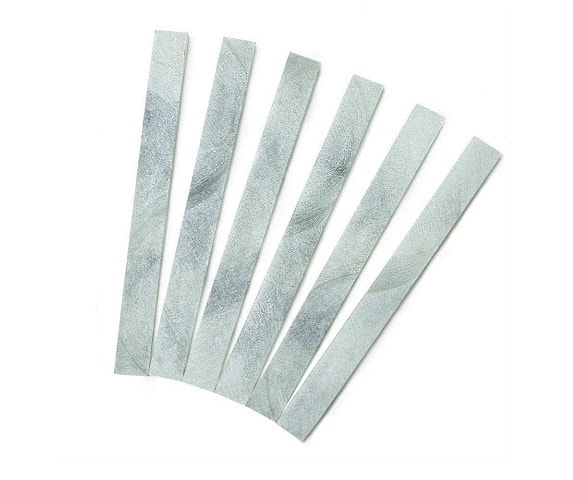What is Soapstone Used for in Welding? (Beginner’s Guide 2024)
Last Updated on

When you are welding or fitting up a weldment, you need to be able to make marks on the material, much in the same way a carpenter would use a pencil or chalk line. However, you cannot make very clear marks with a pencil on steel. In this case, it is better to use a piece of soapstone since it is more visible.
What is Soapstone Made of?
Well, it’s not made from soap, despite the name. Soapstone is primarily made from a soft clay mineral called talc, which is composed of hydrated magnesium silicate. Talc is so soft that it is gentle enough to be used in baby powder. There are also other minerals found in soapstone as well, e.g., chlorite, carbonites, micas.
But what is interesting about soapstone is that it is incredibly heat resistant for how soft it is. Scandinavian peoples entering the Bronze Age learned that they could make soapstone casts into which they poured molten metal to form weapons. Yet the heat resistant property of this indispensable tool of the trade is one of the last things on our minds when we are fabricating.
How is Soapstone Used in Welding?
Soapstone in welding is used in nearly every phase of fabrication. Of course, other methods (e.g., paint pen) can be used for some of these phases. When it is used, it is often used with a soapstone holder. There are both round and flat versions, depending on the shape of your soapstone. Of course, you can freehand it without a holder. But the advantage of a holder is that you are less likely to break your soapstone, especially if it is thinner. If you do break it, it will probably only break off at the tip.
Soapstone Use: Material Handling
Even before the steel gets to the fitter to be assembled for the welders, it often already has markings on it from the supplier. Suppliers get the set of project drawings which includes a cut list, that is the dimensions and type of material to be cut. Oftentimes the supplier will then designate on each piece of material the piece number. This is usually done with a paint pen or tags, but it can be soapstone as well.

Soapstone Use: Fit-up
When the material comes in from the supplier, it is the fitter’s job to assemble pieces per a given drawing with tack welding. Soapstone is necessary for this stage of fabrication. Before the fitter can put the pieces of metal in the right place, he needs to do some layout. Through a careful reading of the drawings, he will use the soapstone to inscribe the edges of each piece of material. It’s also a great way to work out any mathematically related questions to the project. You have a blank canvas on the steel as well.
One of the benefits of soapstone being soft is that you can file it down to the desired thickness to make your marks. If you have a tight tolerance (e.g., + or – 1/32nd of an inch), you can make the soapstone thinner to be more articulate.
Soapstone Use: Welding
In order for that the Quality Assurance department to know who is welding what, many companies have a welder identification system. This is usually played out as the welder putting his unique identification number next to each weld he completes. This is often done with soapstone.
Soapstone Use: Flame Straightening
One other use for soapstone in welding is for flame straightening. When a weldment gets distorted from the stress of too much weld, an oxyfuel torch can be used to induce heat into the material to counteract the stress on the opposite side of the joint. In this case, the dimensions of the weld path (no more than half an inch on either side of the weld toes), are transposed to the other side of the joint and traced out using soapstone. This is the ideal method of marking the material since the soapstone marks will not fade or be blown away by the heat of the torch.
How Do You Sharpen a Welding Soapstone?
If you have flat edge soapstone, rest the soapstone against a hard surface (preferably steel), and file it down in one spot until you like the result. You can also use a metal file. For the rounded style, many sharpeners are included with the holder, though some people have been known to use a belt sander or even a grinder.
Conclusion
Fabricators would have a tough time doing away with soapstone in welding. It’s made seeing their measurements fairly easy. Though it cannot replace the precision of a chalk line or machined notches in a surface, these would not be possible without laying down the initial marks.
